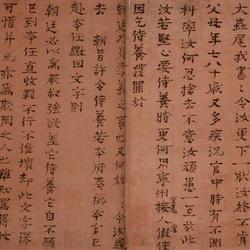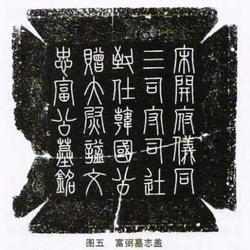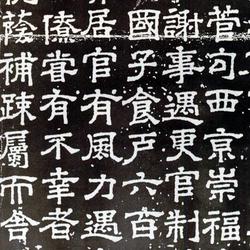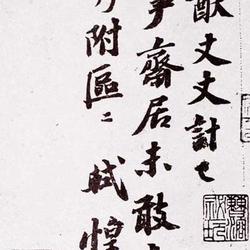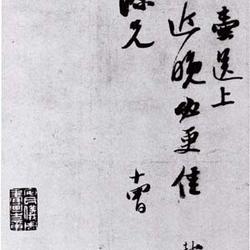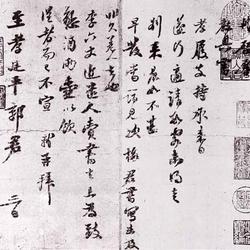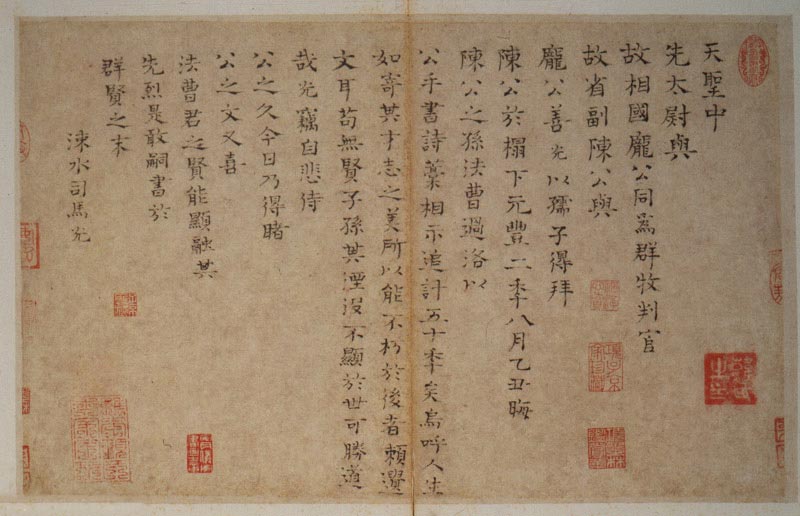
Sima Guang's "Tian Sheng Tie", regular script, paper, length 30·3 cm, width 48·6 cm. Collection of the National Palace Museum, Taipei
There are seventeen lines, each with a different number of words, for a total of one hundred and fifty-one words. This piece by Sima Guang is a postscript written by Chen Shenghua on his handwritten poem manuscript, also known as "Tian Sheng Tie". The "Xian Taiwei" mentioned in the article refers to Sima Guang's father Chi, the "former Prime Minister Pang Gong" refers to Pang Ji, and the "former deputy deputy Chen Gong" refers to provincial Hua.
Sima Guang's postscript is written in neat small regular script. The overall structure is upright and rigorous, and the beauty of the waves of official script can be faintly seen in the horizontal and vertical strokes. The use of pen at the beginning, end or hook is similar to that of Yan Zhenqing, a great calligrapher of the Tang Dynasty. In fact, the calligraphy style of scholar-official calligraphers in the Northern Song Dynasty was mostly influenced by Yan Zhenqing. This work by Sima Guang is a good example.
Explanation: The former Taiwei of Tianshengzhong and the former Prime Minister Pang Gong were both judges of Qunmu, the former deputy provincial deputy Chen Gong and Pang Gongshan, and they worshiped Chen Gong under the couch as a child. In the second year of Yuanfeng, August Yi Chouhui fell. Chen Gong's grandson Fa Cao passed through Luo, and he wrote poems in his handwriting to show that he had been here for fifty years. Woohoo! Life is like a gift, and the beauty of his talent and ambition, so he is not worthy of the latter, depends on Yiwen's ear. If there are no virtuous descendants, then they will disappear and not show up in the world. How can we win! I am sad because I have served the Duke for a long time. Today, I can see the Duke's writings. I am also happy that the virtuousness of Lord Cao can be shown and integrated with his martyrs. I dare to write this to the end of the group of sages. Sushui Sima Guang.

